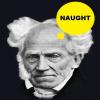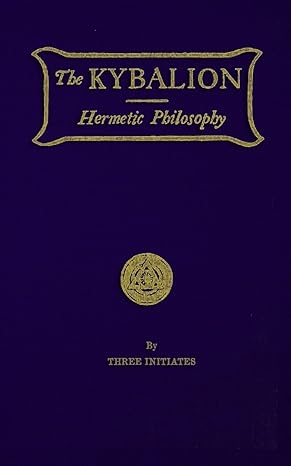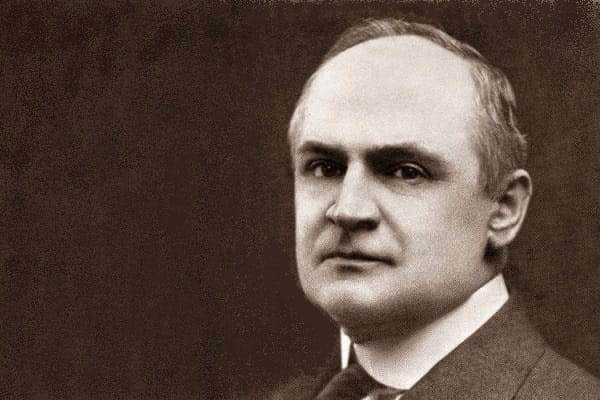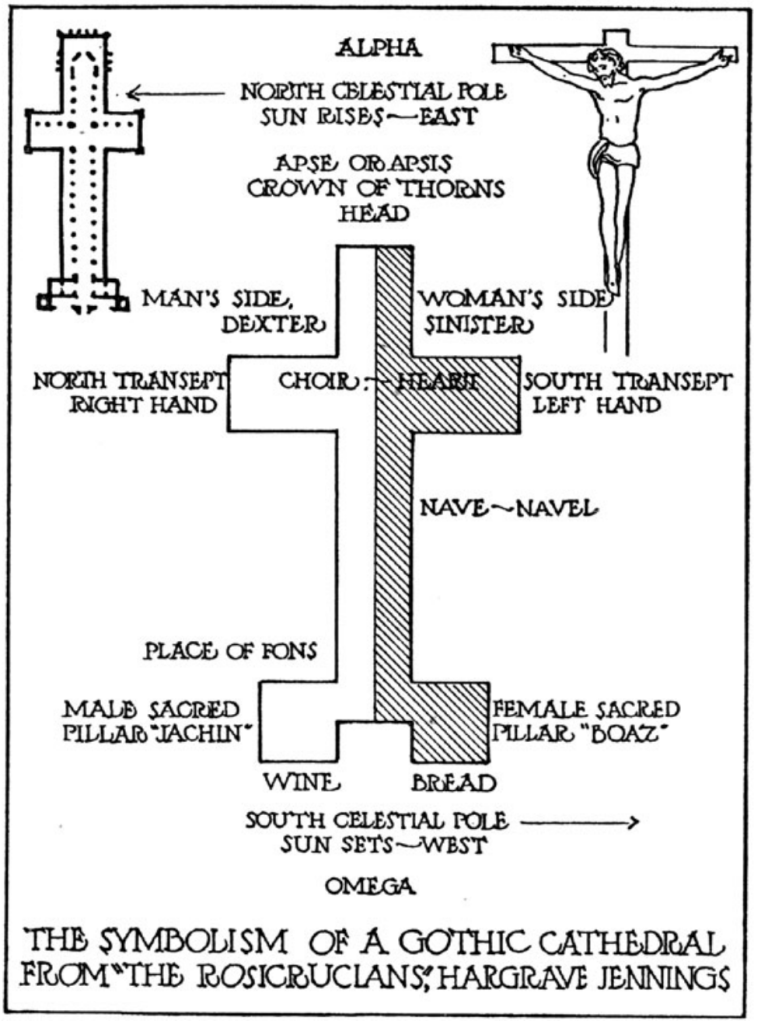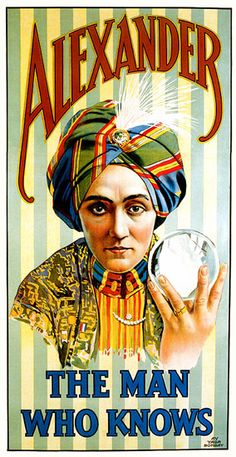Those who endorse the theory that Whitty was one of “The Three Initiates” gesture towards a number of interesting points. First, Wood (1997) indicates that Whitty and Case knew each other intimately because both served in the same Chicago Temple of an off-shoot of the post-schism Hermetic Order of the Golden Dawn, Alpha et Omega.
To quote Wood (1997), “Michael Whitty remained a faithful A.O. member until death, and he was Praemonstrator of Thoth-Hermes Temple No. 9 or Temple No. 8 according to an S.L. MacGregor Mathers minute book from Ahathoor Temple until his death in Los Angeles. Paul Case succeeded Whitty as Praemonstrator of that Temple, but resigned from the office after a few months, and within a year, Case was expelled from the A.O. by Moina Mathers for “trying to cause dissension within the Order.” As a side note of historical interest to this point, this author has read the original letter that Chief Moina Mathers wrote to expel Paul Foster Case from the Alpha et Omega Order, in which she states that Case was being expelled also not only for causing dissension, but also for his disparaging remarks against MacGregor Mathers, his attacks on the Enochian system, and his claim that the RR et AC was not a real Rosicrucian Order.
Second, Clark (2013) states that Case’s widow Harriet Bullock Case told him that Michael Whitty worked with Case and Atkinson on The Kybalion. Unfortunately, however, the Whitty co-authorship hypothesis faces some notable challenges. First, as occult scholar Robert Word (1997) has noted, in 1907, when Atkinson was working on The Kybalion in 1907, (1) Whitty was in Australia, not in America, and, more devastatingly for this theory, (2) Whitty and Atkinson had not yet met. This latter fact was confirmed by occult author and editor Tony DeLuce (2024). Moreover, to be fair to the BOTA perspective, Clark (2013) himself states that he was told by several reliable sources in BOTA that Whitty had not yet met Case in 1907, but only in 1918.
Indeed, we know that Whitty only moved from Australia to New York after 1908; that is, The Kybalion had already been published when Whitty came to the United States (Denlinger,1997). Moreover, the software-mediated analysis comparing Whitty’s writings with The Kybalion found no stylistic, lexical, or syntactic similarities between The Kybalion and any of Whitty’s writings. Furthermore, there is no evidence of correspondence between Whitty and Atkinson dating to the period when we know Atkinson was working on The Kybalion, since they had not yet met Therefore, it would appear that the Whitty theory can be safely dismissed as historically impossible (given the timeline of when Case met Whitty in 1918), geographically implausible (given the distance between Chicago and Australia), and textually unsupported (given the results of the digital comparative linguistic analysis).
H. Atkinson and The Hermetic Brotherhood of Luxor?: Teike Van Baden’s (2022) Analysis of The Kybalion’s Origins in Florence Huntley’s Harmonics of Evolution (1897)
Before we close the present study, there is one final piece of the puzzle of Kybalion authorship that remains to be explored. 11 years after the publication of Professor Deslippe’s study, that is, in 2022, Pansophers contributor Teike Van Baden published a fascinating article entitled “The Kybalion and its Hermetic Brotherhood Origins.” In this article, Van Baden answers an interesting question that has long lingered in the minds of Kybalion researchers: given that there is no evidence that an ancient book called ”The Kybalion’‘ existed, from which sources did Atkinson derive his “Hermetic laws”?
As part of an answer to this question, Van Baden (2022) shared a bombshell revelation that he uncovered when studying the Hermetic Brotherhood of Luxor’s original documents and the records of Pansophers oral traditions shared within the HBoL, namely, that William Walker Atkinson had in fact been a member of the Chicago section of the Hermetic Brotherhood of Luxor. Even more striking, Van Baden (2022) explained that it was from the Hermetic Brotherhood’s Chicago study circle that Atkinson derived the material that would later form the substantial basis of The Kybalion.
In his analysis, Van Baden (2022) points out that The Kybalion’s ‘‘Hermetic Laws” are largely based on the Laws Florence Huntley provided in her book The Harmonics of Evolution. This text was published in 1897, 11 years before The Kybalion. Huntley was married to her Initiator, John Emmet Richardson; both she and Richardson were members of the Hermetic Brotherhood of Luxor. Van Baden (2022) provides evidence through textual comparison with Huntley’s text that The Kybalion’s Principles of Mentalism, Vibration, Polarity, and Gender all have analogues in Huntley’s Harmonics of Evolution. He adds that The Kybalion’s Principle of Correspondence was expressed in the 1896 book Celestial Dynamics by Hermetic Brotherhood of Luxor Secretary Thomas Burgoyne, a book which predated The Kybalion’s publication by 12 years. Of course, Burgoyne’s Celestial Dynamics was itself interpreting the famous maxim from the Emerald Tablet of Hermes Trismegistus which says that “quod est superius est sicut quod est inferius, et quod est inferius est sicut quod est superius, ad perpetranda miracula rei unius” (“What is above is like what is below, and what is below is like what is above, to enact the wonders of the One Thing”).
To synthesize the work of the different researchers we’ve examined so far, Van Baden’s (2022) findings can be illuminatingly integrated with the findings of Mary K. Greer (2009). As we noted above, Greer found that The Kybalion’s 7 Laws were also derived from “an introduction to a translation of Hermetic writings by Anna Kingsford and Edward Maitland called The Virgin of the World of Hermes Mercurius Trismegistus (1885).” Indeed, we recall that Greer (2009) discovered that ”in the short introductory essay to The Virgin of the World (1885), called “The Hermetic System and the Significance of its Present Revival,” we find nearly the same seven (unnumbered) laws, doctrines or principles that are found in The Kybalion.” To this point, Richard Smoley (2011) notes the following similarities between The Kybalion and Maitland’s Introduction to The Virgin of the World of Hermes (1885):
“Maitland asserts that consciousness is “the indispensable condition of existence,” and that matter “is a mode of consciousness,” which certainly resonates with The Kybalion’s doctrine of Mentalism. Maitland also mentions “the Law of Correspondence between all planes, or spheres, of existence.” He also speaks of “the doctrine of Karma,” which dictates “the impossibility either of getting good by doing evil, or of escaping the penalty of the latter” – an obvious parallel to The Kybalion’s “Law of Cause and Effect.” In light of these resemblances and The Kybalion’s insistence that it contains the essence of Hermetic teaching, it is very likely that Kingsford and Maitland’s work was at least one of The Kybalion’s sources.”
As it turns out, in Chicago’s Hermetic Brotherhood of Luxor circle, all three of these texts — that is, Kingsford and Maitland’s Virgin of the World of Hermes (1885), Burgoyne’s Celestial Dynamics (1896) and Huntley’s Harmonics of Evolution (1897) — were studied and that Atkinson had access to them (Van Baden, 2022; also verified to this author in correspondence with Van Baden (2024). The Hermetic Brotherhood of Luxor’s study of the Virgin of the World of Hermes (1885) was additionally confirmed to this author in correspondence with Pansophers researcher and author Samuel Robinson (2024).
Indeed, Van Baden (2022) revealed that William Walker Atkinson was studying these texts and involved with the Hermetic Brotherhood of Luxor’s Chicago circle within the time-frame in which he was writing The Kybalion. While Atkinson was active in Chicago in 1907, a chapter of the Hermetic Brotherhood of Luxor called the Hermetic Brotherhood of Atlantis, Luxor, and Elephantae was operating; the Chicago circle was led by Myra and W.P. Phelon until they passed away in 1896 and 1904 respectively (1907). According to the archives of the Hermetic Brotherhood of Luxor, the Chicago group was still operating under their students in 1907; indeed, Albert Sidney Raleigh, also known as Hach Nactzin El Dorado Can, became head of the Hermetic Brotherhood
of Atlantis and kept the Chicago circle going until 1913 (Demarest, 2017). Nancy McKay Gordon (1850-1931) also remained active with the Chicago HBoL group around the same time; she published a series of Twelve Centers of Consciousness lessons and distributed them to the Chicago Hermetic Brotherhood of Luxor members between 1900 and 1908, the latter being the year when The Kybalion was published (IAPSOP, 2011).
The Hermetic Brotherhood’s W.P. and Myra Phelon moved through the same Hermetic and Theosophical circles as Atkinson and also shared his interest in New Thought. Like Atkinson, the Phelons were fellow publishers of occult magazines; the couple published a monthly journal called The Hermetist in Chicago. Atkinson was not only an avid reader of The Hermetist and attended Chicago Theosophical Society events, but even used the term “the Hermetist” in The Kybalion itself. In fact, the word appears a total of 42 times throughout The Kybalion. In The Hermetist magazine, the Phelons promoted and advertised the work of New Thought authors Annie Rix Militz and Ursula Gestefeld. Indeed, as yet another example of just how intertwined the Chicago New Thought, HBoL, and Theosophical communities were, like Atkinson, Annie Rix Militz was a fellow New Thought magazine publisher; she published The Master Mind Magazine, which Atkinson read and which quoted him frequently in both articles and advertisements (e.g. see The Master Mind Vol 8. No. 6, published in 1915). 3 years after the publication of this latter issue of The Master Mind, William Walker Atkinson published a book called Master Mind in 1918 under the pseudonym of Theron Q Dumont. The overlaps and cross-references in this period of Chicago occult literary history are truly dizzying enough to make one’s head spin.
As yet another example of this overlap, Like Atkinson, W. P. and Myra Phelon, as well as many other members of the Chicago Hermetic Brotherhood of Luxor, were involved in the Chicago branch of the Theosophical Society. Here, Atkinson met some of the authors he published in his magazines such as Elias Gewurz. Both W.P. and Myra Phelon became members of the Theosophical Society on November 11, 1884; they were active in the Chicago Branch, which Atkinson frequented, and of which Dr. Phelon was the Corresponding Secretary (TSGMR 1875-1942). The Phelons helped to form the Ramayana Theosophical Society on July 27, 1887. Among other texts, the Ramayana group studied Atkinson’s works under the pseudonym of Yogi Ramacharaka, such as his book Raja Yoga, which was itself influenced by the work of Hermetic Brotherhood of Luxor member Genevieve Stebbins (Nichols, 2013).
To this point, Kimberly Nichols (2013) showed that Atkinson drew on Stebbins’ teachings on yogic posture and breathing in her Dynamic Breathing and Harmonic Gymnastics (1892) to write Raja Yoga. Stebbins was a close associate of Thomas Burgoyne and co-founded the Hermetic Brotherhood of Light with him and other HBoL members. As we noted, Burgoyne was the author of The Celestial Dynamics (1896), which influenced Atkinson’s formulation of the Law of Correspondence in The Kybalion (Van Baden, 2022). Like Atkinson, Militz, and W.P. Phelon, Burgoyne was an occult magazine editor; he published The Occult Magazine. In the Ramayana Theosophical Society, W.P. Phelon served as President. The group’s meetings took place at 629 Fulton Street, which also served as W.P. Phelon’s doctor office, the editorial office of The Hermetist, and the business address of the Hermetic Publishing Company (Godwin, 1995; TSGMR, 1875-1942).
As if the Theosophical, New Thought, and Hermetic connections to Atkinson and the HBoL were not yet sufficient, Atkinson’s editorial work also brought him into contact with the Hermetic Brotherhood of Luxor members in Chicago. Indeed, right before Atkinson became the editor of Herbert A. Parkyn’s magazine Suggestion, there were mentions of ”Hermetic Brothers” attending a Full Moon Meeting of the Hermetic Brotherhood of Luxor published in the Suggestion (Deslippe, 2011). Garrett (2012) indicates that the Phelon group had shortened their name to the Hermetic Brotherhood by this time. Moreover, the Hermetic Brotherhood of Luxor’s Chicago members and the editors and authors of the Suggestion interacted with Parkyn’s Chicago School of Psychology, of which Atkinson was a student (Deslippe, 2011). The connections in this Chicago esoteric web were tightly-wound indeed.
Thus it was that by the early 1900s, all of the currents of esoteric thought that would find their confluence in Atkinson and result in the creation of The Kybalion (1908) were in place. Besides his love for New Thought and Theosophy, Atkinson’s budding interest in unifying New Thought with “the Hermetic philosophy” attracted him to the Chicago chapter of the Hermetic Brotherhood of Luxor, for the group not only claimed to be custodians of this philosophy, but also to have an initiatory descent from ancient Hermetic Masters (Godwin, 1995; Van Baden, 2022. Like The Kybalion‘s own pretended ancient origins, this “ancient lineage” was undoubtedly fictionalized for prestige. However, the absence of an “authentic ancient lineage” was no impediment to Atkinson, because the 19th century materials the Brotherhood studied were sufficient for his literary purpose; these were the Kingsford and Maitland (1885), Burgoyne (1896) and Huntley (1897) texts that would go on to form the substantial core of The Kybalion (Van Baden, 2022).
In summary, what appears clear from the research of Van Baden (2022) within the Pansophers‘ archives of Hermetic Brotherhood of Luxor documents, as well as from Greer’s (2009) comparative analyses, is that The Kybalion is essentially a New Thought reformulation of the central principles that Atkinson drew from three 19th century texts that were studied by the Chicago HBoL: Kingsford and Maitland’s Virgin of the World of Hermes (1885), Burgoyne’s Celestial Dynamics (1896) and Huntley’s Harmonics of Evolution (1897). As an addendum, this author was informed both by Samuel Robinson and Teike Van Baden in 2024 that, from the way Atkinson writes, the version of Kingsford and Maitland’s ideas that ended up crystallizing into The Kybalion reflects, not the text directly, but the works as-interpreted by the Hermetic Brotherhood of Luxor. As per Van Baden (2022), who introduced his article as the first in a series, the Pansophers are planning additional forthcoming publications to further elucidate this point. Interested readers can follow the Pansophers’ website for upcoming updates.
To close this section with an amusing point on the Atkinson-Hermetic Brotherhood of Luxor connection, although the HBoL were known for their esoteric sexual energy and sex magic teachings influenced by Paschal Beverly Randolph, Atkinson did not appear pleased with how some members interpreted and applied these teachings. Indeed, in Chapter 2 of The Kybalion (1907), Atkinson warns against ”the many base, pernicious and degrading lustful theories, teachings and practices, which are taught under fanciful titles, and which are a prostitution of the great natural Principle of Gender” (Atkinson and Deslippe, 2011). Although The Kybalion came out 7 years after the Victorian Period ended in 1901, its version of “Hermeticism” would have been very much at home in the period’s infamous prudishness.

First Edition of The Kybalion: Hermetic Philosophy by ”Three Initiates” (1908).
I. The Lone Initiate: Concluding Reflections on the Authorship of The Kybalion
In conclusion, despite the generally theoretical and not practically-oriented nature of the text, the limited nature of its actual Hermetic content, and its spurious origins, The Kybalion (1908) remains an important text in the history of 20th century occultism and the New Thought movement. In this article, we have presented a critical-historical analysis of 12 proposed candidates for members of “The Three Initiates.” As a result of this analysis, we conclude that The Kybalion (1908) was likely the sole work of William Walker Atkinson, with the pseudonym of the “The Three Initiates” having been chosen as a reference to the Thrice-Great Hermes Trismegistus, legendary father of the Hermetic Tradition. While it is possible that Paul Foster Case may have helped edit or discuss ideas with Atkinson, this seems unlikely for the reasons we have presented. The research presented in this article suggests that Atkinson wrote The Kybalion as an attempt to provide a New Thought formulation of Hermetic ideas he drew from his three sources, Kingsford and Maitland’s Virgin of the World of Hermes (1885), Burgoyne’s Celestial Dynamics (1896) and Huntley’s Harmonics of Evolution (1897).
As a final note to close out the present study, Atkinson’s preoccupation with crystalizing and clarifying the “Universal Laws” that govern the spiritual and material worlds according to his understanding of the Principle of Correspondence (“As Above, So Below”) would continue throughout his life. Indeed, shortly before Atkinson suffered a significant stroke and passed away in 1932, he completed his definitive statement on what he took to be the universal laws of nature. This work represents the culmination of the ideas he first articulated in The Kybalion. Entitled The Seven Cosmic Laws and written in 1931 this fascinating work of the mature Atkinson is the final manuscript of William Walker Atkinson. For decades, it remained unpublished until Professor Deslippe received clearance from the Atkinson Estate to publish it in his The Kybalion: The Definitive Edition (2011). Readers with an interest in The Kybalion and New Thought history and how its author understood the cosmic principles he strove to articulate in the original 1908 text would be highly recommended to pick up this work. The 2011 text not only features a fantastic scholarly introduction and definitive text of The Kybalion, but also the complete text of The Seven Cosmic Laws.
In closing, while this author’s esoteric studies ultimately carried him far from The Kybalion since his first time flipping through its mysterious pages as an adolescent, he continues to look fondly on the wide-eyed moments he first spent poring over the cryptic statements of Universal Laws that he first found in this 1908 text. He remains grateful to Atkinson’s text for helping to spark the hunger for the Light of the Hidden Knowledge that would go on to carry this fellow Initiate through the rest of his spiritual and authorial life.
Adam J. Pearson - https://philosophadam.wordpress.com/2024/03/16/three-initiates-unveiled-a-critical-historical-analysis-of-12-proposed-candidates-for-authorship-of-the-kybalion-1908/
References
Atkinson, W. W., & Deslippe, P. (2011). The Kybalion: The Definitive Edition. New York : Jeremy P. Tarcher/Penguin Books.
Atkinson, W. W. (2016). The Secret Of Mental Magic. Denmark: Jazzybee Verlag Publishing.
Bailey, R. (2009). The Confession of Cyprian of Antioch: Introduction, Text, and Translation. Montreal: McGill University Press.
Bailey, R. (2017). The Acts of Saint Cyprian of Antioch: Critical Editions, Translations, and Commentary. Montreal: McGill University Press.
Block, S. (2021). “On Gender in Hermeticism: Excerpts and Commentary.” The Digital Ambler. Retrieved on February 21, 2022. https://digitalambler.com/2021/03/11/on-gender-in-hermeticism-excerpts-and-citations/
Block, S. (2021). “On Gender in Hermeticism: Analysis, Ranting, and Questions.” The Digital Ambler. Retrieved on February 21, 2022. https://digitalambler.com/2021/03/12/on-gender-in-hermeticism-analysis-and-ranting/
Block, S. (2019). “The Kybalion is Still Crap No Matter Who You Think You Are.” The Digital Ambler. Retrieved on February 21, 2022. https://digitalambler.com/2019/03/08/the-kybalion-is-still-crap-no-matter-who-you-think-you-are/
Bull, C. H. (2015). Ancient Hermetism and Esotericism. Aries, 15(1), 109-135.
Bragdon, C. F. (1910). Episodes from an Unwritten History. Rochester, New York: The Manas Press.
Bragdon, C. F. (1938). More Lives Than One: Autobiography of Claude Bragdon. New York: Alfred A. Knopf.
Bragdon, C. (1901). The Bodily Temple. House and Garden (May): 192–196.
Bragdon, C. (January, 1908). “The Gothic Spirit.” Christian Art. Vol. 2, No. 4. Retrieved March 30, 2022.
Charvet, D. (2007). Alexander: The Man Who Knows. Pasadena, CA: Mike Caveney’s Magic Words Press.
Collins, M. (1889). The Blossom and the Fruit: A True Story of a Black Magician. Retrieved on February 18, 2022. https://archive.org/details/blossomandfruit01collgoog
Collins, M. (1914). The Crucible. London: The Theosophical Publishing Society.
Commercial and Financial Chronicle. (October 19, 1907). New York.
Copenhaver, B.P. (1993). Hermetica: The Greek Corpus Hermeticum and the Latin Asclepius in a New English Translation, with Notes and Introduction. Cambridge: Cambridge University Press.
Chapel, N. E. (2013). “The Kybalion’s New Clothes: An Early 20th Century Text’s Dubious Association with Hermeticism.” Journal of the Western Mystery Tradition. No. 24, Vol. 3. Vernall Equinox. Retrieved February 21, 2022. http://www.jwmt.org/v3n24/chapel.html Clark, P. (2013). Paul Foster Case: His Life and Works. New Zealand: Ohm Publishing.
“Dee, J.” (2010). Tuba Veneris or The Consecrated Little Book of Black Venus. Translated from Latin by Teresa Burns and Nancy Turner. In Journal of the Western Mystery Tradition 12(2). Available at: http://www.jwmt.org/v2n12/venus.html %5BAccessed 4 June 2018].
Demarest, M. (2017). “JUL 25 Chain Gang and Bucket Shop: A Note on Albert Sidney Raleigh and George W. Wiggs.” Chasing Emma: Resolving the contradictions of, and filling in the gaps in, the life, work and world of Emma Hardinge Britten.
Denlinger, D. (1997). Correspondence on the Authorship of The Kybalion. Archived by Levity. Accessed February 16, 2022. http://www.levity.com/alchemy/t_kybal.html
Dresser, W. D. (1919). A History of the New Thought Movement . New York: Thomas Y. Crowell Company.
Ellis, E. V. (1994). Geomantic Mathematical (re) Creation: Magic Squares and Claude Bragdon’s Theosophic Architecture. Design–Build, 4th. Accessed March 30, 2022 from https://www.researchgate.net/profile/Eugenia-Ellis/publication/285603189_Geomantic_ReCreation_Magic_Squares_and_Claude_Bragdon%27s_Theosophic_Architecture/links/5ff4c87b92851c13feefc49f/Geomantic-ReCreation-Magic-Squares-and-Claude-Bragdons-Theosophic-Architecture.pdf
Erik, R. (2016). “The Nature of God in the Kybalion and the Hermetica.” Arnemancy. Retrieved February 21, 22.
Farnell, M. (2003). The Many Lives of Mabel Collins. Theosophical History Conference 2003.
Farrell, N. (2014). “Why the Kybalion Should Not Be Taken Seriously.” NickFarrell.IT Accessed January 20, 2024 from https://www.nickfarrell.it/kybalion/
Forum Borealis (2018). “Philip Deslippe – Kybalion Unmasked: 3 Initiates and 7 Cosmic Laws.” Accessed February 21, 2022 from https://open.spotify.com/episode/4m0Zdm6kELw9WtUKtDMTkr
Forzoni, R. (2016). “Alexander: The Man Who Knows.” Published in The Magic Circular. Accessed May 1st, 2022 from https://forzonimagic.com/mindreaders-history-forzoni-magic-london-mindreader-london-magician/alexander-man-knows/
Garrett, R. (2012). “Hermetic Brotherhood of Light, the Hermetic Brotherhood of Luxor, the OTO and Chicago.” Occult Chicago. Accessed February 6, 2024 from https://occultchicago.blogspot.com/2012/11/hermetic-brotherhood-of-light-hermetic.html
Gewurz, E. (1916, September). Comments on “Light on the Path.” The Messenger. Accessed February 16, 2022. https://www.theosophical.org/files/resources/articles/LightonthePath.pdf
Godwin, J. (1995). The Hermetic Brotherhood of Luxor: Initiatic and Historical Documents of an Order of Practical Occultism. York Beach, Maine: Weiser Books.
Ghosh, A., & Ghosh, A. (2020). Chronology of Vedic and Vedānga Periods. Descriptive Archaeoastronomy and Ancient Indian Chronology, 109-137.
Greer, M. K. (2009). Source of The Kybalion in Anna Kingsford’s Hermetic System. Accessed February 17, 2022. https://marykgreer.com/2009/10/08/source-of-the-kybalion-in-anna-kingsford%E2%80%99s-hermetic-system/
IAPSOP. (2011). The International Association for the Preservation of Spiritualist and Occult Periodicals. Accessed January 31, 2024 from http://iapsop.com/lessons/
Kunkin, A. (1997). Correspondence on the Authorship of The Kybalion. Archived by Levity. Accessed February 16, 2022. http://www.levity.com/alchemy/t_kybal.html
Levitt, S. H. (2003). The dating of the Indian tradition. Anthropos, 341-359.
Lopez, C. (2020). The Veda. In Routledge Handbook of South Asian Religions (pp. 17-48). Routledge.
Mead, G.R.H. (2015). Corpus Hermeticum – Translated. New York: Scholar’s Choice.
Membership Ledger Cards Roll 3, number 01994. Theosophical Society in America Archives.
Nelson Marquis, A. (Ed.). Who’s Who in America, 1912 – 1913, Vol. VII [7]: A Biographical Dictionary Of Notable Living Men And Women In The United States. New York: N. Marquis & Company
Nichols, K. (2013). “Mysteries of the Hermetic Brotherhood of Luxor.” Newtopia Magazine. Accessed January 19, 2024 from https://newtopiamagazine.wordpress.com/2013/08/15/mysteries-of-the-hermetic-brotherhood-of-luxor/
Odell, K. A., & Weidenmier, M. D. (2004). Real shock, monetary aftershock: The 1906 San Francisco earthquake and the panic of 1907. The Journal of Economic History, 64(4), 1002-1027.
Pearson, A. (2018). “The Bells and Trumpets of Solomon: Resounding Instruments of the Solomonic Grimoires.” Light in Extension. Accessed February 16, 2022.https://lightinextension.wordpress.com/2018/06/05/the-bells-and-trumpets-of-solomon-resounding-instruments-of-the-solomonic-grimoires/
Peterson, J. H. (2005). The Sixth and Seventh Books of Moses. Esoteric Archives. Accessed August 15, 2018 from http://www.esotericarchives.com/solomon/ksol2.htm
Peterson, J. H. (2018). The Key of Solomon the King. Esoteric Archives. Accessed August 15, 2018 from http://www.esotericarchives.com/solomon/ksol2.htm
Richardson, A. (2007). Priestess: The Life, and Magic or Dion Fortune – New and Revised Edition. Loughborough, UK: Thoth Publications.
Robinson, S. (2019). “Beverly Randolph and the Forgotten Euleusinian Rosicrucians of England.” Pansophers. Accessed January 19, 2024 from https://pansophers.com/paschal-beverly-randolph-rosicrucian/
Sahagun, Louis (2008). Master of the Mysteries: The Life of Manly Palmer Hall. Port Townsend, Washington: Process Media.
Skinner, S. (2013). Magical Techniques and Implements Present in Graeco-Egyptian Magical Papyri, Byzantine Greek Solomonic Manuscripts and European Grimoires: Transmission, Continuity and Commonality (The Technology of Solomonic Magic). Newcastle, Australia: University of Newcastle.
Smoley, R. (2011). ”The Mysterious Kybalion.” New Dawn 124. Accessed January 19, 2024 from https://www.newdawnmagazine.com/articles/the-mysterious-kybalion
Stratton-Kent, J. (2014). The Testament of Cyprian the Mage. Ludlow, UK: Scarlet Imprint.
Taylor, K. (2018). Claude Fayette Taylor: Senior Thesis. Accessed March 30, 2022 from https://theosophyart.org/2018/03/30/claude-fayette-bragdon/
Theosophical Society General Membership Register (TSGMR), 1875-1942. Accessed January 31, 2024 at http://tsmembers.org/. See book 1, entries 3051 and 3052 (website file: 1B/6).
Тошов, Х. И. (2021). “FORMATION AND DEVEL”Formation and Development of the Ideas of Hermeticism.” Исследование Ренессанса Центральной Азии, 2(1).
Trismegistus, H. (2003). The Emerald Tablet. The Alchemy Reader: From Hermes Trismegistus to Isaac Newton, 27-28. Cambridge: Cambridge University Press.
U.S. Bureau of the Census (1975). Historical Statistics of the United States from Colonial Times to 1970. Published by the U.S. Department of Commerce. Accessed February 16, 2022. https://www.census.gov/history/pdf/histstats-colonial-1970.pdf
“The Magician’s Apprentice – Interview With An Occult Student of Dr. Joe Lisiewski.” (2021, November 7). Way of Fools Broadcast 25. Retrieved April 21, 2022 from https://www.youtube.com/watch?v=HPLxr76cWgo
Wood, R. (1997). Correspondence on the Authorship of The Kybalion Between Dan Denlinger and Robert Wood. Archived by Levity. Accessed February 16, 2022. http://www.levity.com/alchemy/t_kybal.html
Van Beiden, T. (2022). The Kybalion and its Hermetic Brotherhood of Luxor Origins.” Pansophers. Accessed February 21, 2022. https://pansophers.com/kybalion-hermetic-brotherhood-of-luxor-origins/
